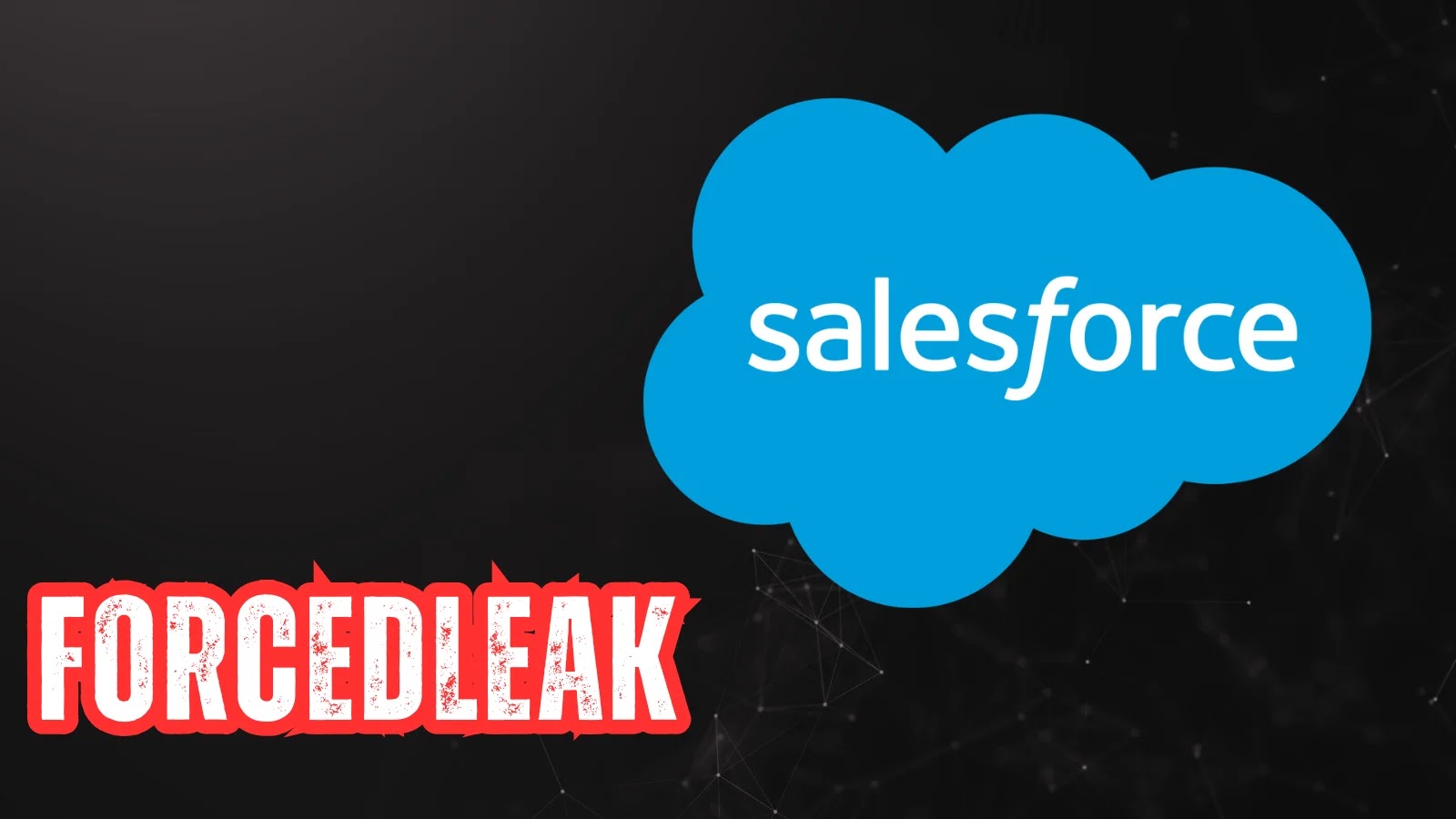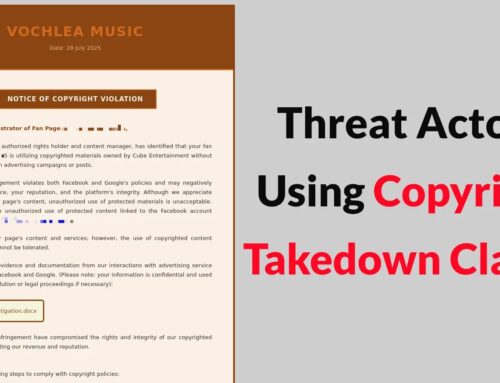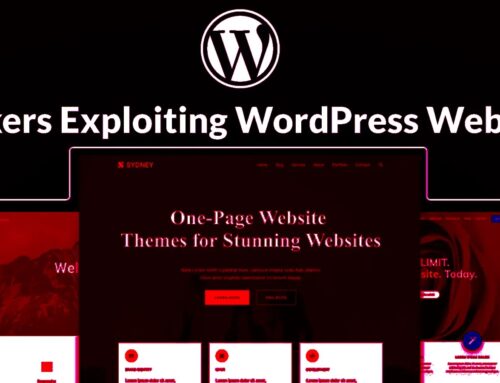
Salesforce AI Agent Vulnerability Allows Let Attackers Exfiltration Sensitive Data
Salesforce AI Agent Vulnerability: A Critical Threat to CRM Data Security
In a landscape increasingly reliant on artificial intelligence for business operations, a critical vulnerability within Salesforce’s Agentforce AI platform has sent ripples across the cybersecurity community. This flaw, dubbed “ForcedLeak” by researchers at Noma Labs, could have allowed external attackers to exfiltrate sensitive customer relationship management (CRM) data, underscoring the expanded and fundamentally different attack surface presented by modern AI systems.
The discovery, which carries a severe CVSS score of 9.4, highlights the urgent need for organizations to reassess their security postures in the age of AI. This post delves into the specifics of the ForcedLeak vulnerability, its potential impact, and crucial remediation steps to safeguard your valuable data.
Understanding the ForcedLeak Vulnerability
The ForcedLeak vulnerability chain was executed through a sophisticated indirect prompt injection attack. Unlike traditional prompt injections where an attacker directly manipulates a large language model (LLM) with malicious input, an indirect prompt injection introduces adversarial instructions through a third-party source. In this context, it likely involved injecting malicious data or instructions into a legitimate data source that the Salesforce AI agent would then process, inadvertently causing it to deviate from its intended function and leak sensitive information.
The severity of this attack vector stems from its ability to bypass conventional security controls that might focus solely on direct user input. By poisoning the data supply chain, attackers can turn an AI agent, designed to be helpful, into an unwitting accomplice in data exfiltration. The target was Salesforce’s core CRM data, containing a wealth of proprietary and personal information, making the potential impact of such a breach catastrophic.
The Mechanics of Indirect Prompt Injection
Indirect prompt injection represents a significant evolution in AI-specific attack techniques. It exploits the inherent trust that AI models often place in their training data and external information sources. Here’s a simplified breakdown:
- An attacker injects malicious instructions or data into a source that the AI agent is designed to access or process (e.g., a shared document, a database entry, an email).
- When the Salesforce AI agent processes this tainted information, it interprets the maliciously embedded instructions as legitimate commands.
- These commands could then compel the agent to perform actions it shouldn’t, such as retrieving and revealing sensitive CRM data to the attacker, performing unauthorized actions, or manipulating other systems it has access to.
This method is particularly insidious because the AI agent itself isn’t directly compromised; rather, its behavior is subtly manipulated by pre-seeded malicious content, making detection challenging.
Remediation Actions and Best Practices
Addressing vulnerabilities like ForcedLeak requires a proactive and multi-layered approach to AI security. Here are actionable steps organizations using AI platforms, especially those handling sensitive data, should consider:
- Input Validation and Sanitization: Implement robust validation and sanitization for all data inputs that an AI agent processes, regardless of its source. This includes both direct user inputs and data from integrated third-party systems.
- Principle of Least Privilege for AI Agents: Configure AI agents with the absolute minimum permissions necessary to perform their designated tasks. Restrict their access to sensitive databases, APIs, and external systems.
- Output Filtering and Verification: Implement rigorous filtering and verification mechanisms for all outputs generated by AI agents. Ensure that outputs do not contain sensitive information that shouldn’t be revealed. Human-in-the-loop verification can be crucial for high-risk operations.
- Continuous Monitoring and Logging: Establish comprehensive logging and monitoring of AI agent activities, including inputs, internal processing steps, and outputs. Look for anomalous behavior or unexpected data access patterns.
- Regular Security Audits: Conduct frequent security audits of AI models and their integrated ecosystems to identify potential prompt injection vectors or other vulnerabilities. Engage specialized AI security firms for expert assessments.
- Employee Training: Educate staff on the risks of prompt injection and social engineering tactics that could be used to manipulate AI systems, even indirectly.
- Secure Development Lifecycle (SDLC) for AI: Integrate security considerations throughout the entire AI development and deployment lifecycle, from design to production.
Tools for AI Security and Prompt Injection Detection
As AI security matures, specialized tools are emerging to help identify and mitigate prompt injection risks. While the field is evolving, here are some categories and examples of tools that can assist:
| Tool Category | Purpose | Link (Example) |
|---|---|---|
| AI Security Platforms | Comprehensive platforms for AI model testing, vulnerability scanning, and runtime protection for LLMs. | Lakera Guard |
| Input Validation Libraries | Libraries for Python and other languages to sanitize and validate user and system inputs. | Pydantic |
| Web Application Firewalls (WAFs) | While not AI-specific, WAFs can help filter malicious inputs before they reach an application or AI system. | Cloudflare WAF |
| Logging & Monitoring Solutions | Tools to aggregate and analyze logs for suspicious AI agent activities. | Splunk |
| Open-Source Security Tools | Community-driven tools for specific AI vulnerability scanning and testing. | OWASP Top 10 for LLMs |
The Evolving AI Attack Surface
The ForcedLeak vulnerability is a stark reminder that the integration of AI agents into critical business infrastructure introduces fundamentally new security challenges. The traditional notions of network perimeters and endpoint security are insufficient when dealing with AI systems that interact autonomously with vast datasets and other services.
The CVSS score of 9.4 for this vulnerability underscores its critical nature. While a Specific CVE ID for ForcedLeak was not explicitly mentioned in the source material, vulnerabilities of this type are often categorized under broader weaknesses in AI systems, such as insecure AI model interfaces or insufficient data sanitization. Keeping an eye on the official CVE database for related AI-specific vulnerabilities will be crucial in the coming months and years.
Conclusion
The Salesforce AI Agent vulnerability, ForcedLeak, serves as a critical case study in the emerging field of AI security. It demonstrates that advanced indirect prompt injection techniques can lead to severe data exfiltration, even in sophisticated platforms. Organizations leveraging AI must prioritize comprehensive security strategies that encompass input validation, strict access controls, continuous monitoring, and proactive vulnerability assessments. Failure to adapt security practices for the unique challenges of AI will inevitably expose sensitive data to new and increasingly complex threats.





